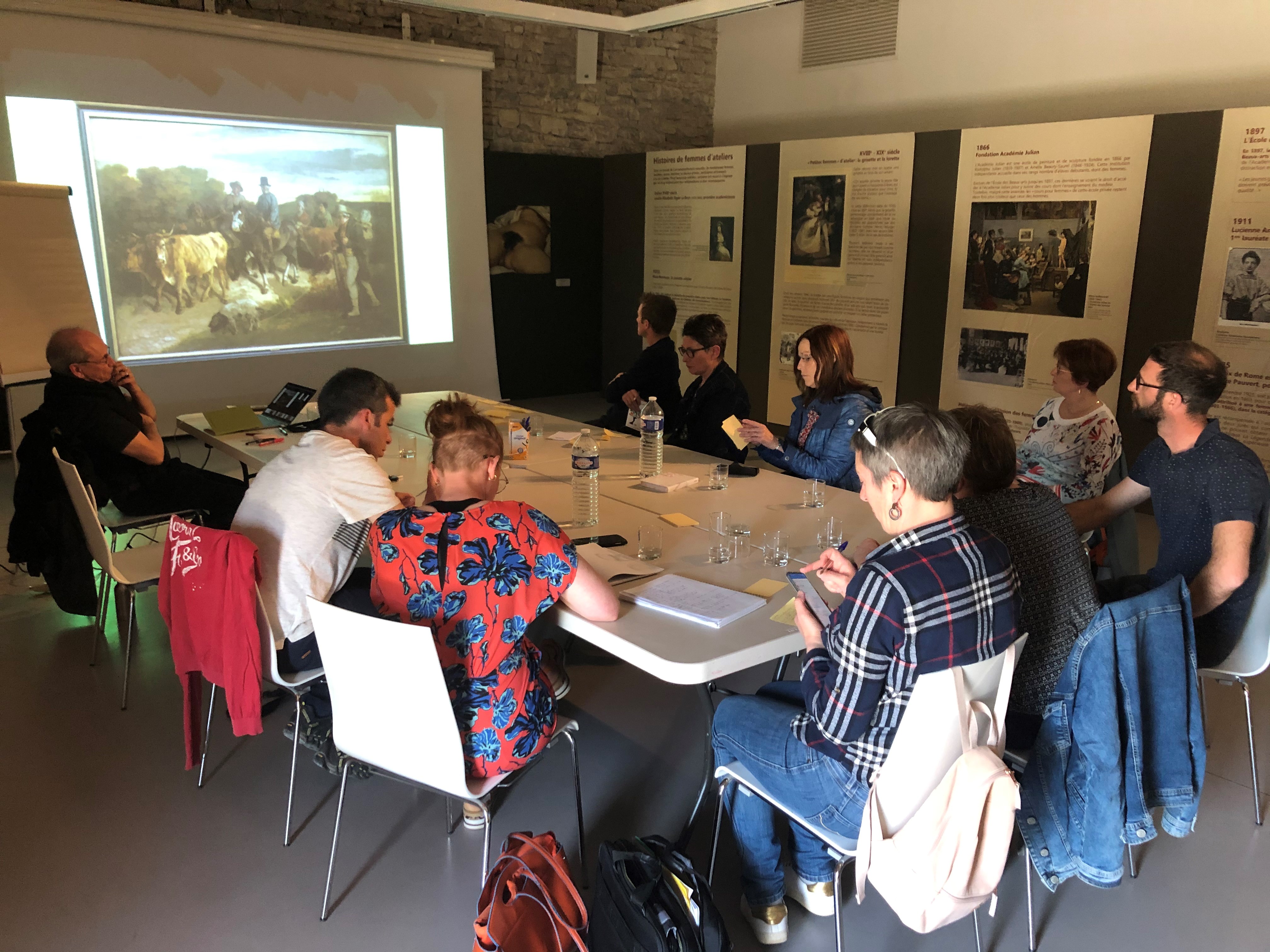The ethnological research centre (“ethnopôle”)
“Pays de Courbet, Pays d’artiste” is an ethnological research centre. Awarded by the Ministry of Culture in 2010, the “Ethnopôle” label allows the Departmental Council to develop a national ethnological research and resources centre alongside its cultural initiatives. There are only ten in France, in 2018. Three themes have been defined for the Courbet Country centre: the relationship between artistic activities, population and territory; the arrangements for representing a territory and, finally, the arrangements for organising artistic and cultural initiatives.
Promoting Courbet and the Loue Valley
When the Doubs Departmental Council decided in 2003 to convert and develop the Courbet museum, it chose, from 2004, to associate it with three other sites that the artist travelled through and painted: the Courbet family farm in Flagey, the Source of the Loue site and the painter’s studio in Ornans. The aim was to support the cultural, social and economic development of the region by promoting sites situated within the Ornans-Salins-Pontarlier triangle. In 2010, the Franche-Comté Regional Department of Cultural Affairs (DRAC) awarded the project the “Ethnopôle” label, thereby unveiling the aim of the project: to become a centre of excellence built on the relationship between art and territory in order to promote the work of Courbet and the Loue Valley.
Art and territory
Exploring the link between Courbet and the Ornans region leads into a more global research involving Anthropology and the History of Art. The region is a central aspect of Courbet’s painting. Between a map, a poem, a hydrographic survey and a painting by the artist, what is said about the Loue? Can Courbet’s art contribute towards the advancement of certain scientific theories?
Such thoughts echo the research being carried out in other regions celebrated by famous artists: Monet in Giverny, Gauguin in Pont-Aven, Cézanne in Aix-en-Provence, etc.
Art and the local population
Gustave Courbet belonged to the network of artists and intellectuals who, in the 19th Century, put forward a new vision of art by choosing to portray the local population as subjects, and on large canvases, of which he was one of the pioneers. To achieve this, he invited the inhabitants of Ornans to his studio to act as models for some of his works. In this sense, the painter may be seen, in his own way, as a 19th Century ethnologist.
An ethnological research centre covers a wide range of activities:
exhibitions, study days,
publications, building up documentation, etc.




